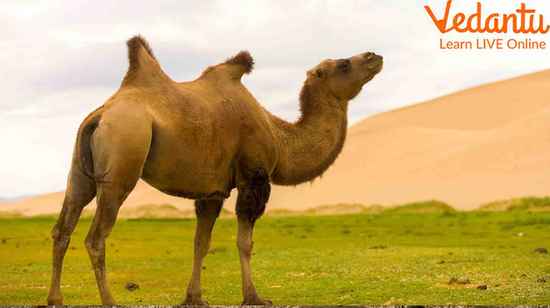Water in Camel’s Hump: The Scientific Fact Behind This Myth
Introduction
We have seen animals adapting to their environments in a brilliant way. It is a unique way of developing certain physiological features to survive the harshness of nature. Some develop camouflaging features whereas some animals develop abilities to store water. Camels are the best examples to describe such abilities. It is said that a camel hump can store water. Is it true?
Do camels store water in their humps? Well, this is one of the questions that baffled us all the time. A hump is big enough to carry. Then, why does a camel develop a hump? Let us find out with a proper scientific explanation.
Why Do Camels Develop Humps?
We know how deserts are the toughest environment to survive. It is arid, dry, barren, and hot in a desert. Food sources are very limited and so are the natural water reserves. It is tough to find a water source even if camels travel hundreds of kilometres on hot sand. Their evolutionary changes made them develop a hump that can store fat.
You will be surprised to know that the hump does not actually carry water but a camel can survive weeks without drinking water. These humps are made of fatty tissues. When a camel eats, it stores fat in its hump. Kangaroo rats and other small rodents are the perfect answers to which animals do not drink water. Camels, on the other hand, drink water whenever they get a source nearby.

Myth Behind Camel Hump Storing Water
Also, Read: Animals without Eyes Surviving in the Wild - Who Are They?
It means that the adaptive features have a different arrangement for camels to survive in an extremely dry climate. Now that we know how the humps develop, let us find out how a camel uses it to reserve fat. Does it really use a hump to get water?
Scientific Use of Camel Humps
The scientific reason behind the development of a hump is that it functions as a food reserve. As mentioned earlier, camps live in an arid climate where food sources are remarkably low. A camel might have to survive without food for months. This is why a camel starts developing a hump as it grows. We can clearly understand the camel hump meaning here. It is a bump developed on the back of a camel and is made of fat.
A camel calf depends on its mother’s milk. It quenches its thirst and even gets the nutrition required to grow. Camels have other means to reduce their thirst. Adult camels develop humps on their backs to store fat, not water. It is evident from the scientific findings that camels use their humps as food reserves, not water reserves.
Hence, the myth of camels storing water in their humps is scientifically wrong. They use their hump fatty source when they don’t get food. It means their biological requirement of the respiratory substrate is fulfilled by the stored fat. In fact, we have observed that when the fat reserve in a hump is fully utilised, it flaps like a deflated balloon. Once a camel gets a food source, it starts eating voraciously and the hump begins to resume its shape.
Fat deposition begins rapidly resulting in the formation of the hump again. So the answer to the question of what's inside a camel's hump is fat. It acts as an energy reserve. Scientists also suggest that breaking down fat also produces water to some extent.
Where Do Camels Store Water?
So, the fundamental question still lies unanswered. What is the way the camel stores water in its system? Is there another organ for storing and using water judiciously? You will be surprised to know that a camel drinks as much as 75-76 litres of water at a time. Where does this amount of water go?
As mentioned earlier, the climatic conditions of a desert are very dry. It causes extreme perspiration and animals lose a lot of water. Almost all the animals living in a desert learn how to reduce losing water through sweat. In this aspect, a camel stores water in its bloodstream. Surprising, isn’t it?
It can store as much as 75 litres of water in its bloodstream without increasing blood pressure. When it sweats, it loses water but the bloodstream still manages to maintain its functions. One of the most amazing facts about camels is that it elevates their body temperature due to their ovoid blood cells. Hence, it can regulate its body temperature and control perspiration.
Camel Humps Myth Busted
Do camels store water in their humps? They actually don’t. They store fat when the camels eat. Fat is the ideal respiratory substrate to offer energy for carrying on cellular operations. A camel hump does not contain water.
In fact, the answer to which animal can store the most water can be camels. They store water in their bloodstreams and so do giraffes. Giraffes can store up to 45 litres of water. This is a unique adaptation we can find in animals that live in arid climates such as deserts. We can even find two humps in Bactrian camels. They have developed a unique feature to store more fat but not water.
Conclusion
From the above discussion, we can clearly state that camels do not use their humps to store water. It is a physiological development that lets a camel store excess food in the form of fat. This fat is then used as a respiratory substrate to burn and produce energy.
Camels have other ways to store water and control perspiration. Their kidneys do not need much water to flush out toxins either. Their blood cells are developed to regulate body temperature and control perspiration. Their bloodstreams can easily store hundreds of litres of water easily. Hence, camel hump stores water is a myth.







